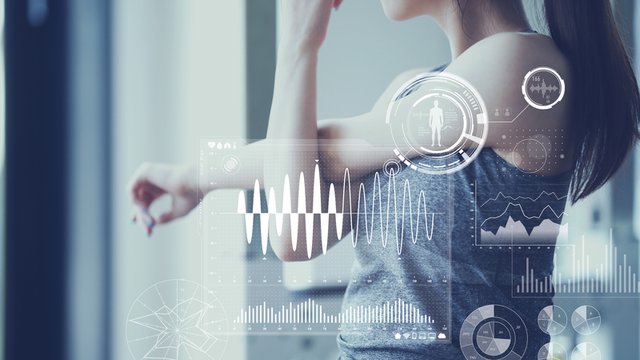

The influence of technology in sport is increasingly all the time, both at a professional, amateur or even recreational level. Technological innovations have been able to change the face of sport, offering precise measurement tools, equipment that improves performance and devices that prevent injuries or facilitate the recovery of athletes.
In this post, we will see some examples of how technology is used in sports, beyond the famous VAR, which we all now know from watching most football matches today. And if you are interested in developing a professional career in the sports and technology sector, we'll explain how Universidad Europea can help you - such as studying a Master in Sports Technologies and Digital Transformation.
What is technology in sport for?
The use of technology in sports and physical activity open a new chapter in competitions, training and athlete care. New technologies are applied to the design of materials for clothing, footwear or sports instruments. They are also becoming the best ally for coaches as they allow them to monitor athletes' performance and better schedule training and rest.
From sports apps to the latest technology to analyse athletes' performance to prevent injury or aid recovery, technology has revolutionised the sports industry in recent years. With the Degree in Physical Activity Sciences and Sport at Universidad Europea, you will become an expert in physical activity and sport with extensive knowledge of applying and using technology.
The new technologies, such as artificial intelligence in sports are also becoming the right-hand man referees and umpires, facilitating communication or assisting them in difficult decisions. And they are already applied in systems for the prevention, diagnosis and treatment of sports injuries.
Advantages and disadvantages of technology in sport
In this section, we’ll look at the advantages and disadvantages of how technology has impacted the sport sector:
- Protects the athlete's health: The use of new technologies in sports allows athletes to be monitored to avoid overexertion that could cause injuries. It also contributes to perfecting treatments to facilitate the recovery of athletes. Thanks to electrostimulation, for example, certain muscle groups can be kept in shape, even if the athlete cannot train.
- More accurate and fair decisions: Super slow-motion systems, closed video circuits or VAR minimize the referees' margin of error by providing them with information so they can make better and fairer decisions. And the technology has been adopted in various sports such as football, rugby, tennis and athletics.
- Collect valuable data: Another of the benefits of technology in sport is that it collects a large amount of data that allows for more accurate tracking of training and performance. Coaches can use that information to plan workloads and optimise training.
- Improve performance: The use of technology in sports improves the performance of athletes. Its applications are multiple, from the creation of new materials that are more resistant to contact and speed of movement to hyperbaric chambers that simulate altitude conditions of up to 2,000 meters above sea level to improve the respiratory capacity of athletes.
However, not everything that technology has done in sport has been beneficial. There are also some downsides to it, including:
- Longer waiting time: The dynamism of sport means that, in some specific cases, consulting technology to make a conclusive decision implies excessively long waiting times that can affect the pace of the game or competition.
- Technological doping: Athletes or teams can take advantage of technology to improve their performance, making competitions less fair to those who do not have access to such technology.
Examples of how technology is used in sport
- Thermography: This technology makes it possible to evaluate the surface temperature of athletes to identify injuries or risk of injury in sport, also allowing monitoring of rehabilitation treatments and reincorporation into normal activity once recovered.
- Player tracking systems: Player positioning and tracking systems provide valuable information in team sports such as football or basketball, helping coaches to get to know the players better and make more informed decisions during competition, training or rest.
- Sports apps: Technology has democratised and promoted the practice of sport. With smartphones, sports applications and/or activity bracelets, many people can monitor indicators such as the intensity of the exercise, the distance covered, the route, the number of calories consumed, maximum strength, number of steps taken, or the heart rate.
- Video systems: Video solutions are not only present in sports at a commercial and entertainment level to provide a more immersive experience for fans, but are also used for refereeing purposes, such as Hawkeye used in tennis, VAR or the automatic goal detection system in football.
- Nanotechnology: Nanoscale systems are being applied more and more in sport. Thanks to nanotechnology, lighter surfboards, golf balls that do not deviate from their trajectory and swimming suits that repel water have been created.
Study sport and technology at Universidad Europea
Universidad Europea is one of the best private universities in Spain and we have collaborations with some of the best-known clubs and companies in the world of sports. If you choose to study with us, online, such as a Course in Sports Technologies, or in person, you will have access to a first-class faculty, experts and professionals in each of their areas of knowledge. With the possibility of attending events, visiting companies in the sector, and completing internships, you can build your own network of contacts in the sector.
One of the advantages of studying at Universidad Europea is access to the world-class facilities. We have laboratories for exercise physiology, biomechanics, training and analysis of sports techniques, physiotherapy, biology and anatomy. An example of this is the Human Performance Research Lab (HPRLab), where you will learn and understand, using the latest technology, the psychophysiological limits of the human being and apply that knowledge to improve people's health.
Article published on Aug. 24, 2021